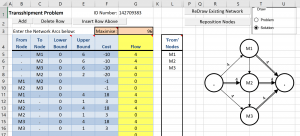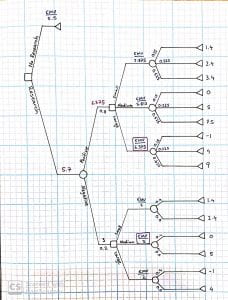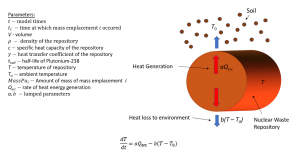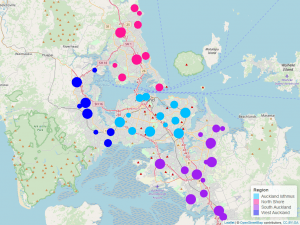Hey y’all,
Are you vibing?
Despite the relief we feel post-exams, it can still be a nervous time while we wait for our final results to arrive on SSO. Are you going to make the Dean’s Honours List? Are you going to have a high enough GPA to be eligible for Engineering Science*? Are you going to pass? Whatever level you’re aiming for I hope you feel happiness and satisfaction with your results.
So, who’s ready for me to relive some of the trauma of what has undoubtedly been the busiest three months of my entire life? This will be a big boy, but take from it all that you can. To help you with any last-minute guidance on picking your specialisation, I have highlighted key terms in this post that you should google if you want to try and figure out if engineering science floats your boat.
High-level Overview of Semester 2
A lot of what I did in second semester made me feel like a wizard, I was using skills I had learnt just the semester previous and even in courses I was taking at the time (n.b. graph theory is EVERYWHERE), I could really feel myself riding the engineering science bike (with training wheels of course). I’m feeling more comfortable and happy with my decision to take engineering science than ever before; it is pushing the extent of my mental capacity and ability to work both harder and smarter, but I think I’m loving it!?! Also, I think I might have just figured out what engineering science is truly about… but that’s for my final post 🤐
ENGSCI 255 – Modelling in Operations Research
The bottom line here is: linear programming, decision-making and simulating (which happen to be the course’s three sections funnily enough), with an excel and R programming focus.

Linear programming is all about finding the optimal solution to real-world problems with more constraints than you can shake a stick at e.g. “What is the cheapest way to formulate a muesli bar with certain ingredients that satisfies certain nutritional requirements?” or “How can I ship products from A,B,C to X,Y,Z as to satisfy demand and minimise cost?”. We learn all about formulating these problems, what an optimal solution actually is and what our limits are on optimality is when the system changes.

Decision making is all about, well… decision-making… how to make good decisions in the face of uncertainty, analysing data and creating fancy looking visualisations (scatters, boxplots and time-series oh my 😍), as well as using classification trees and probability methods (Naive Bayes’) to predict outcomes, which leads into machine learning. All very applicable and useful stuff!
And finally, simulation. Think: “How do I simulate a process given randomness as opposed to something set in stone?”. This section delves into creating, simulating and analysing randomness in real scenarios. It can seem a bit obscure (dare I say… random even), but it ties in nicely and adds a nice string to your bow. A big component of this is queuing theory which is also a surprisingly widespread in our world.
ENGSCI 263 – Engineering Science Design 1
Remember how David Dempsey said:
ENGSCI263 is probably my overall favourite, mainly because it’s a chance to show you guys how everything fits together, and why Engineering Science is useful.
Well, as per usual, he was right. This course uses a lot of the techniques and skills we learn in ENGSCI 211, ENGSCI 233 and ENGSCI 255, and puts them into practice with complex, real-life problems. As I recall, we used linear regression, interpolation, Euler methods, data visualisation, data analysis, linear programming and even graph theory! This course has had a large overhaul from previous years; it used to have the heat/mass flow components of BIOMENG 221 as well as a larger focus on coding in VBA. Now it is well and truly a masterclass on engineering science in motion. There were many complicated and challenging ideas and techniques we had to grapple with in this course, but oh my goodness it was fantastic
The course is split into two sections that focus on a single group project each; Computational Mechanics (CM) and Operations Research (OR).

The CM section, courtesy of David Dempsey, saw us learning about the modelling process for physical systems, particularly methods for calibrating models to data and the uncertainty in using a model for prediction (prior and posterior distributions). The two concepts of calibration and uncertainty were explored in lab tasks and the group projects focused on several different hypothetical resource consent scenarios. My group worked on modelling the temperature change of a nuclear waste repository to decide if it was safe for continued use!

The OR section, run by ENGSCI legend Kevin Jia, was a whirlwind of content ranging from data processing, to VBA and excel wizardry, to network algorithms and vehicle routing problems, to simulation, to even ethics! The group project for this section was a wild vehicle routing problem; given the longitude and latitude data, and four weeks of demand data for a network of Auckland supermarkets, design a daily route plan for 20 trucks of a specific capacity to deliver food to these locations from a central depot that minimises cost and meets demand, then simulate the use of your plan and find out how robust it actually is! This was by far the most open-ended project I have ever done, it was a real test of our ability to apply what we have learned in such a tangible way.
Additionally, I would like to add that through these group projects, I have made some great friends in my ENGSCI cohort (although the same cannot be said for other people I know who had bad groups… ALWAYS REMEMBER TO PULL YOUR WEIGHT IN GROUP PROJECTS GUYS).
*I hope so cause it’s the specialisation you want to pick… don’t lie to me.
